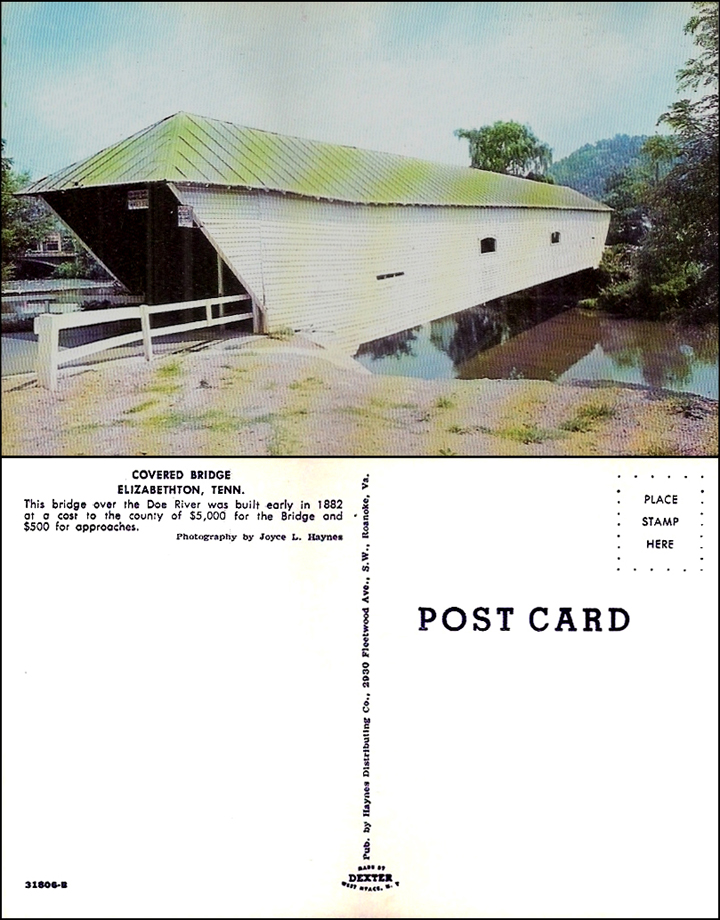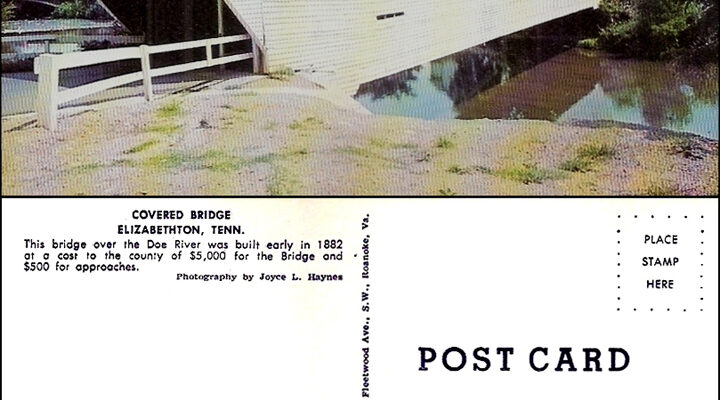On August 14, 1940, a devastating flood occurred in Elizabethton, brought about by a massive overflow of the mountain-fed Watauga River. The 24-hour torrential rain was the remnant of a 91-mph hurricane that, after pounding the South Carolina and Georgia coasts, took direct aim at East Tennessee. The Watauga, normally a peaceful mountain stream about 50 feet wide and only a few feet deep, rose to a staggering 26 to 30 feet and a quarter of a mile wide.
Workers, scampering about in total darkness, rescued persons desperately clinging to trees and housetops after the rising waters swept the Rio Vista region that was adjacent to the city, home to about 150 residents. Authorities began preparations for an orderly evacuation of as many residents as possible.
Mrs. Bob Shell, 54-year-old mother of seven children, became a victim after being trapped in an automobile with her husband and 83-year-old mother when they fled their engulfed home that was located beside the river. The flood also caused heavy property damage.

Sergeant Claude Buckles of the Tennessee Highway Patrol believed that a number of persons drowned as the stream caused the water to rise 20 feet between nightfall and midnight. Although the waters began to rapidly recede, it was daylight before an accurate death toll could be determined.
Don Calfee, managing editor of the Johnson City Chronicle, said he witnessed the bodies of two men being pulled from the water. The small community was adjacent to two large rayon plants, Bemberg and North American Rayon, which had become the hub of industry for this city of approximately 10,000 people. W.S. Argabright, the telephone company manager, said a number of persons were marooned on house roofs as darkness handicapped rescue work.
To assist rescue efforts, a truckload of boats and additionallaw enforcement officers were rushed from nearby Johnson City. Deputy Sheriff Campbell said that every available man who could be located was deputized for relief duty and began patrolling the washed out section.
Nearly half of the East Tennessee and western North Carolina mountain streams bulged from their banks after the downpours. Floods in western North Carolina wrought undetermined property damage to industries and dwellings, interrupted rail and motor traffic.
Asheville’s City Manager said that his city's 51,000 residents faced a major crisis unless repairs were made within 36 hours to three large water mains feeding the two city reservoirs. Workmen, reaching the intakes in the mountains 20 miles away, reported several hundred feet of one 24-inch main washed out and sections of two 18-inch ones broken.
The Swannanoa and French Broad rivers, converging at Asheville, swept out of their banks, forcing hundreds of residents from their homes. Heavy rains sent streams rising rapidly in the Piedmont section of South Carolina from Augusta, Georgia to the North Carolina line. Many highways were closed to traffic.
A young man from Denver, Colorado drowned when his boat plunged over a dam at Lake Eden into the Swannanoa River. Thousands of summer tourists were marooned at dozens of resorts when landslides halted east, west and northbound traffic over the Southern Railway. High water washed away bridges and covered highways in numerous areas.
After the water began receding here, flood warnings were issued for Kingsport on the Holston River 40 miles from Elizabethton and some 1,200 persons living on Long Island near the Tennessee Eastman plant were hastily evacuated.
After the disaster ended, North Carolina counted six deaths from drowning and landslides. Three more were reported near Galax, Virginia and Elizabethton had three. One fatality occurred when a woman died of a heart attack after learning that floodwaters were approaching her home.
